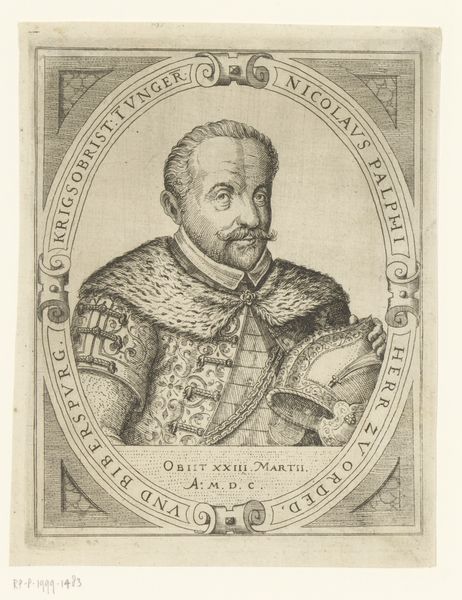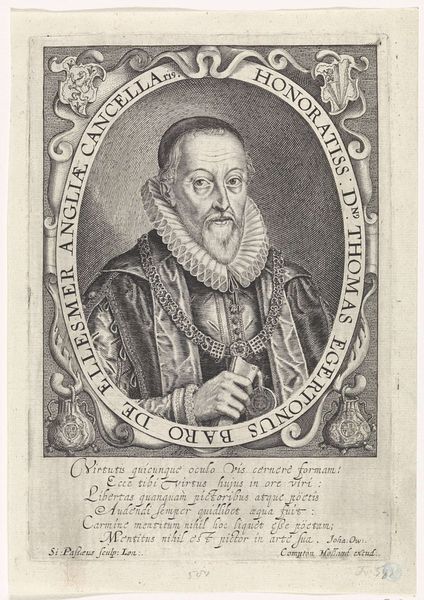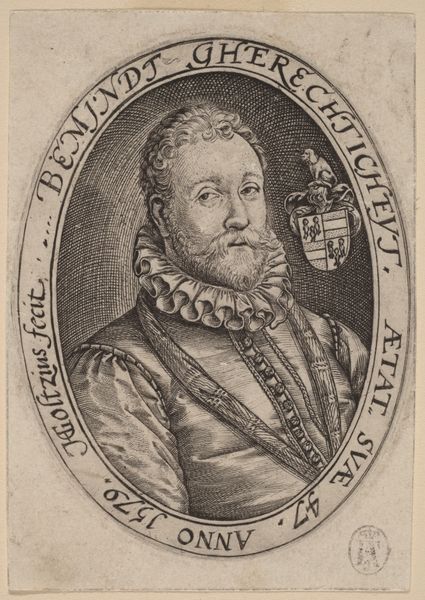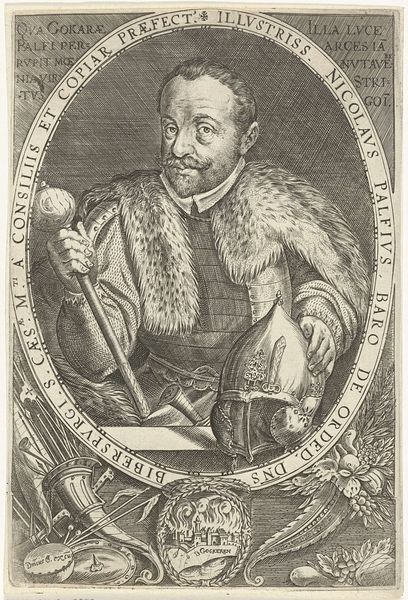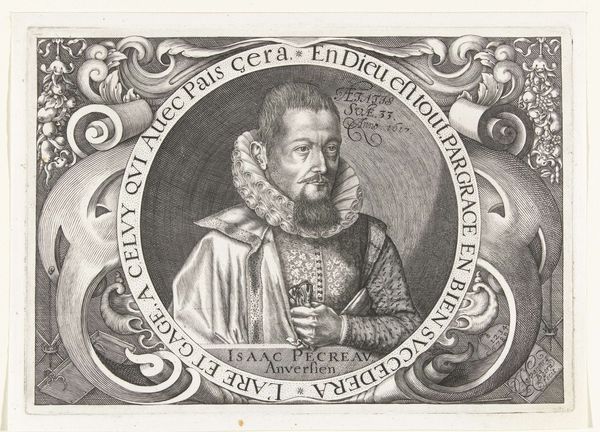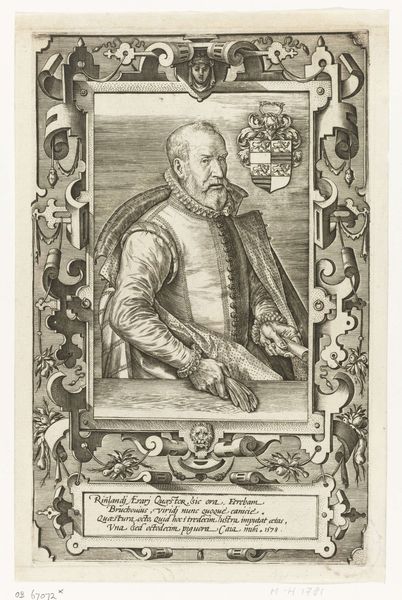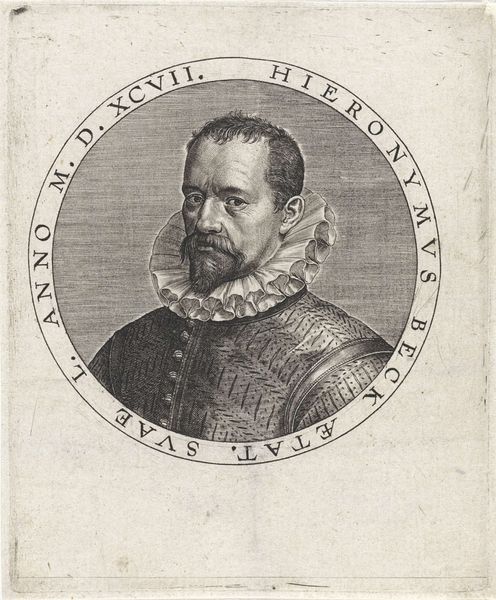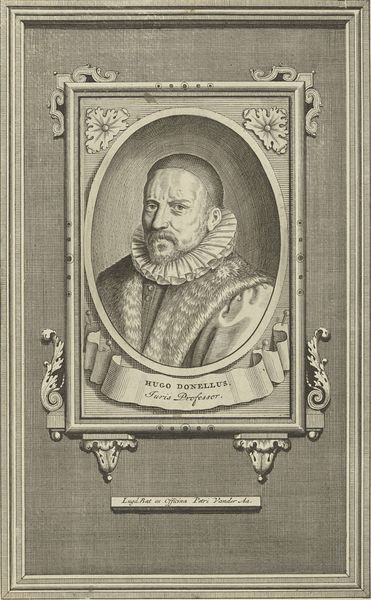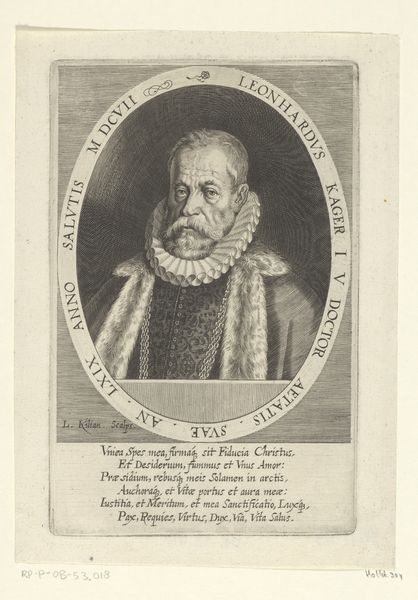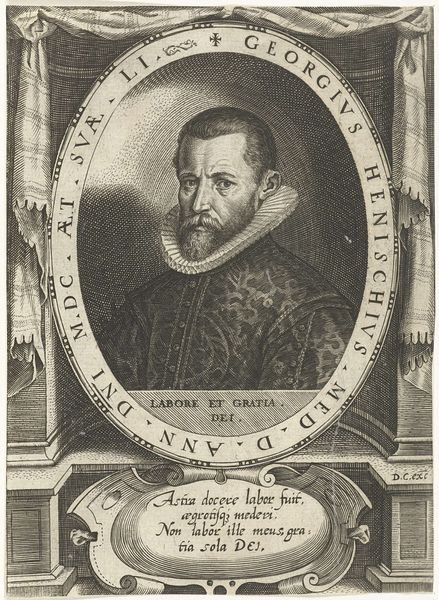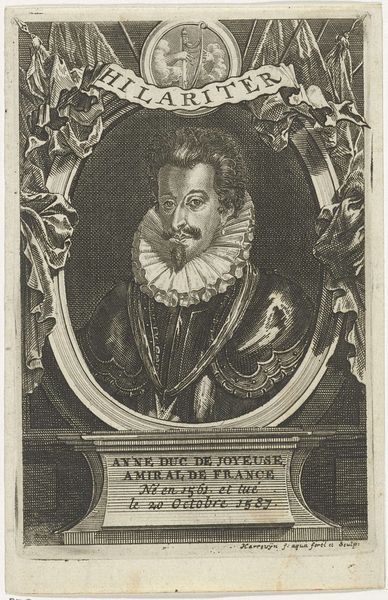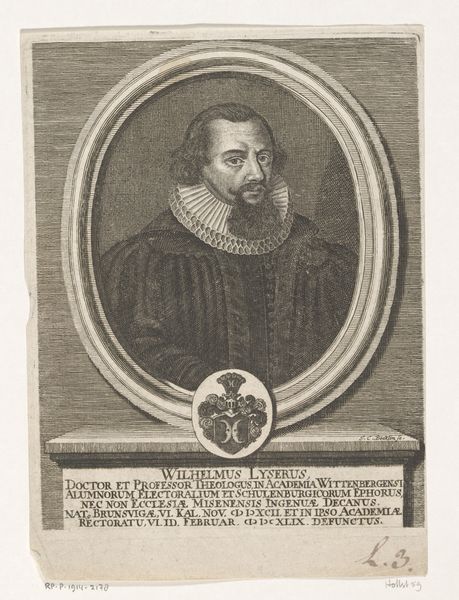
engraving
#
portrait
#
baroque
#
caricature
#
history-painting
#
engraving
Dimensions: height 138 mm, width 106 mm
Copyright: Rijks Museum: Open Domain
This portrait of Melchior Laubanus was made by Paul de Zetter, a printmaker working in the 17th century. It's an engraving, meaning that the image was incised into a metal plate, likely copper, with a tool called a burin. Look closely, and you can see how the varying depths and thicknesses of the lines create the illusion of light and shadow, defining Laubanus’s features and the intricate patterns of his clothing. The inscription around the oval gives the sitter’s name and profession, while the Latin inscription below provides further information about his life. Engraving was a highly skilled craft, requiring years of training to master. Printmaking was also an essential means of disseminating knowledge and imagery in an era before photography, and portraits like this one would have been widely circulated and collected, contributing to the subject’s lasting fame. The very act of committing Laubanus's image to copper and paper was a means of preserving his legacy. By understanding the materials, processes, and social context of this print, we gain a deeper appreciation for the artistic and cultural values of the time.
Comments
No comments
Be the first to comment and join the conversation on the ultimate creative platform.
